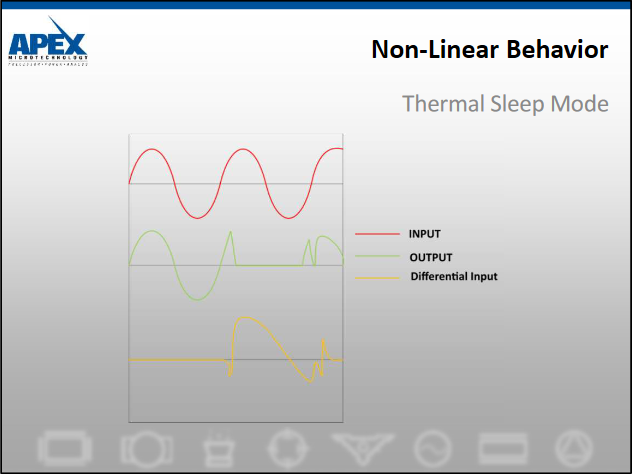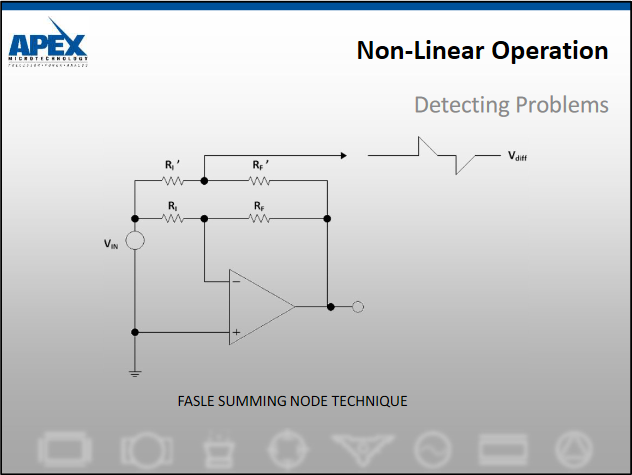Q&A - What is the false summing node technique
Q
What is the "false summing node" technique and how can you use it to protect a power op-amp?
�
A
In certain scenarios, such as when a power op-amp is in current limit mode, its output is saturated, or its output is not able to keep up with the inputs (slew rate limit), the op-amp�s operational mode is non-linear. Therefore the differential input voltage is no longer 0V and the transfer function no longer is:
�

Detecting a nonzero input voltage can be used to sense that the op-amp is running in a non-linear mode and is in potential danger. But how can you "look" at the op-amp�s differential input voltage without disturbing its normal operation? This can be done by using the "false summing node" technique, which uses two extra series resistors between the circuit�s input and output:
�

�
VDIFF�equals the power op-amp�s differential input voltage if:
�

This signal can be buffered and used to sense that the op-amp has entered non-linear mode and to prevent potential damage to the op-amp by shutting it down via further simple analog/digital circuitry, or via a microcontroller/DSP for more intelligent analysis.
�
�
Non-Linear Behavior Thermal Sleep Mode
�

The situation with sleep mode is similar to thermal shutdown. In both cases, the amplifier is disabled by some circuitry which results in the output going into a high impedance state. One additional caution is that when coming out of sleep mode, an amplifier may saturate to one of the rails before recovering.
�

The common denominator of all non-linear modes of operation is the appearance of differential input voltages. One method of sensing when an amplifier is in a non-linear region is to use this false summing node technique.If Rf"/Ri'=Rf/Ri, then Vdiff equals the voltage at the inverting node of the amplifier. This buffered error voltage signal can be used as an error flag possibly to drive a logical latch that could shut down the system.
Would you like to know more? Contact the TOP-electronics team!
























